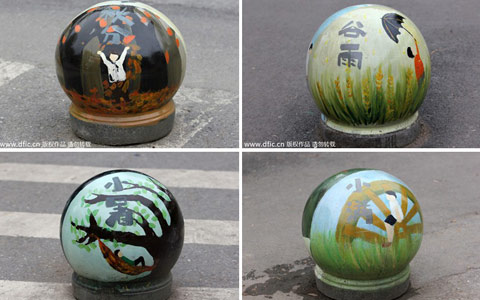Breeding area in Bohai Sea slated to get better protection
Updated: 2014-05-02 10:31
By Zhu Chengpei and Zhang Xiaomin (China Daily)
|
||||||||
 |
|
Dalian Sunasia Ocean World, which has accepted more than 40 rescued spotted seals since 1999, is one of the largest bottle-feeding bases for spotted seals. [Photo provided to China Daily] |
Spotted seals give birth to young ones on ice floes, he said. Newborns have long white fetal hair. Before the hair is shed in two weeks, they rely on breast-feeding and cannot swim nor catch fish by themselves.
"If the sea ice is normal, usually they need no help. But if there is little ice, the mother seal might have difficulty finding her baby after swimming a long way to catch fish. We bring pups in danger to Dalian Sunasia Ocean World," Ma said.
The park has one of the largest bottle-feeding bases for spotted seals. It has accepted more than 40 rescued spotted seals since 1999. Except for several severely wounded ones, most of them survived, said Zhang Shengjiu, a trainer with Sunaisa.
In 2007, with the help of experts from LOFSRI, trainers in the park started to breed spotted seals, and about 40 have been born in the artificial environment, he said.
Four spotted seals that performed well in wild training were released into the wild in 2010, and another six others were released in 2011. Researchers from LOFSRI pasted positioning equipment on their back to track their route but the equipment fell soon.
Spotted seals mainly eat fish, sometimes crustaceans and cephalopods.
In recent year, the reduced fisheries of the Bohai Sea have become a problem.
Environment pollution caused by coastal areas' development and dirty water discharges also influence the spotted seals' breeding.
"I hope all of society, including the government, enterprises, research institutes, and residents, act together to improve the living environment for spotted seals," Wang said.

 'Taken 2' grabs movie box office crown
'Taken 2' grabs movie box office crown
 Rihanna's 'Diamonds' tops UK pop chart
Rihanna's 'Diamonds' tops UK pop chart
 Fans get look at vintage Rolling Stones
Fans get look at vintage Rolling Stones
 Celebrities attend Power of Women event
Celebrities attend Power of Women event
 Ang Lee breaks 'every rule' to make unlikely new Life of Pi film
Ang Lee breaks 'every rule' to make unlikely new Life of Pi film
 Rihanna almost thrown out of nightclub
Rihanna almost thrown out of nightclub
 'Dark Knight' wins weekend box office
'Dark Knight' wins weekend box office
 'Total Recall' stars gather in Beverly Hills
'Total Recall' stars gather in Beverly Hills
Most Viewed
Editor's Picks

|

|

|

|

|

|
Today's Top News
China's Xi orders 'crushing blow' to terrorism
Malaysia releases preliminary report on MH370
China, Russia to hold joint military exercise in May
Chinese, Australian PMs discuss MH370 flight
China, Russia to hold joint military exercise in May
US sanctions on Chinese businesses opposed
Bronx ice-skating rink considers EB-5 for financing
3 dead, 79 injured in Xinjiang blast
US Weekly

|

|








